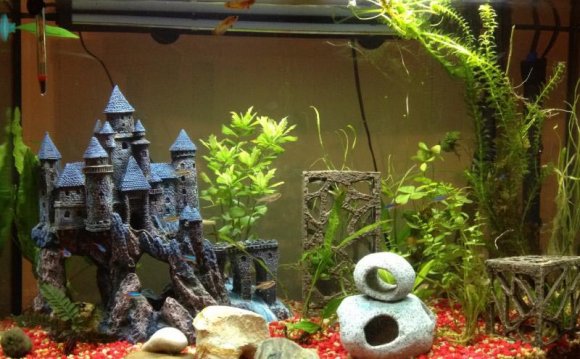
 Betta Fish Center > Aquarium Setup > Betta Fish Tank Setup - Part 1
Betta Fish Center > Aquarium Setup > Betta Fish Tank Setup - Part 1
But where do you begin?
1. Betta Tank Stand
After purchasing the fish tank and all of the equipment, place your tank stand in its permanent position in the room. The tank and its contents, including the water, can be heavy so it’s important that you purchase a commercially manufactured aquarium stand. Sometimes people choose a homemade stand or furniture that looks sturdy, but most times this will not withstand the constant heavy load of an aquarium.
2. Betta Tank Position
Before you decide where to place your aquarium, keep in mind that it has to be a short distance away from an electrical outlet. Of course, you can run extension cords anywhere you want, but unless you have a means to hide them, that beautiful aquarium becomes an unsightly mess of cords. Ideally, your aquarium should be a short distance from an outlet. Also be sure to have an outlet strip wide enough to plug in all of your equipment. The best is one that has a ground fault circuit interrupter (GFCI). This type of outlet strip monitors current and shuts it off in case it surges or overheats.
3. Betta Aquarium Cleaning
The next step is to unwrap your aquarium and wash it. Do not use normal dish detergent or liquid because it will affect the fish. Use a clean, wet sponge to wipe out the inside of the tank. If there is any residue on the glass, use a small amount of vinegar to clean it. Rinse the aquarium well with plain water and place it on its stand.
 4. Tank Support
4. Tank Support
It’s important to support your tank because the aquarium bottoms can have irregularities. Place a thin layer of Styrofoam under the bottom of the tank to use as a support system. The Styrofoam will help balance the aquariums under-surface so that it is firm and sturdy. Also, remember to leave space between the wall and the tank because of the equipment and filter connections.
5. Gravel Cleaning
Lastly, wash all of your substrate (gravel) before you add it to your tank. This is a simple process. Place it in a clean bucket and rinse water over it while you mix it up with your hands or a spoon. As you do this, continually check the water as it runs over the gravel. When it’s clear, the gravel is clean.
When placing the substrate into the tank, pile it higher in the back than it is in the front. This will allow any uneaten food and waste material from the fish to gather in the front of the tank making clean up much easier.









